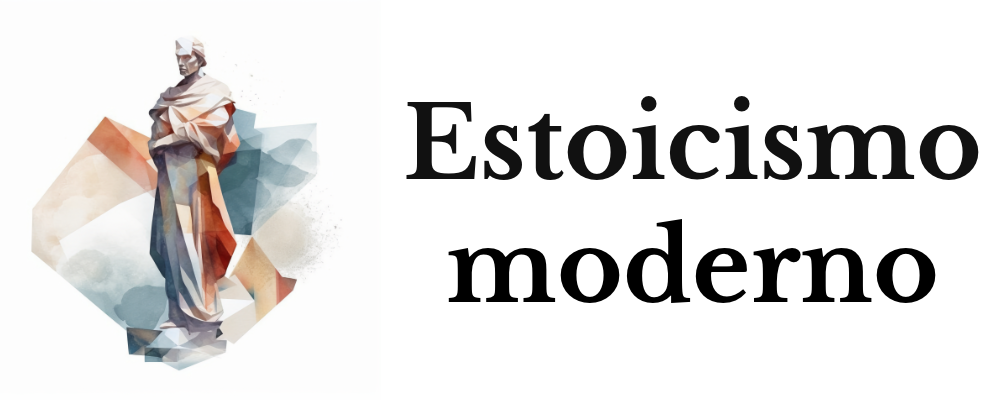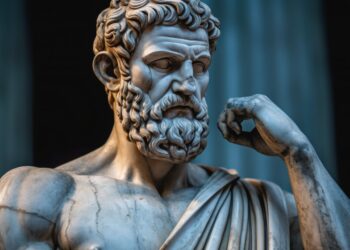Have you ever felt that the line between truly transforming yourself and merely adjusting to the ebb and flow of fortune is as fine as a strand of Arachne’s web? Dear reader, I invite you to journey with me through the intricate weave of change and adaptation, viewed through the lens of ancient Stoic wisdom.
Imagine Seneca, one of our most esteemed Stoic teachers, seated in the dim light of his study, penning with a raven quill: “It is not because things are difficult that we do not dare; it is because we do not dare that they are difficult” (Seneca, Moral Letters to Lucilius). In this astute observation, do we not find the first thread of the skein we must unravel?
We might superficially acclimatize to new technologies or fleeting fashions, but is this what our ancient philosophers urge us to do, or could we infer that they beckon us to pursue a more enduring and significant change? What is the difference between merely adapting, like a chameleon blending into the color of the bush, and evolving at the core of our being?
Stoicism teaches us that genuine change is that which stems from and alters our áskesis, meaning our constant exercise and practice of virtues. Adaptation, however, might require only superficial modifications, something Epictetus would flag as concerning ourselves with what is “outside our own power.”
Isn’t it intriguing to consider how our daily choices are a reflection of this dichotomy? We must ask ourselves: Does the change I seek originate from a profound understanding of my own nature and destiny, or is it merely my instinctive reaction to external pressure? When faced with a crisis, do you respond with the panic of a sailor in a storm or with the calm foresight of a captain who has already charted the course?
Remember, for a moment, when Marcus Aurelius wrote, “The happiness of your life depends upon the quality of your thoughts.” Let’s then probe the thoughts preceding our actions. A genuine change involves an internal metamorphosis, a thought that is molded, and an emotion that is calibrated. Have your past transformations been the result of deliberate contemplation, or have they been mere automatic reactions?
Now, let’s turn our gaze to contemporary dilemmas. In a world of constant technological change, environmental crises, and social challenges, how do we manage the relentless stream of information and pressure nudging us towards certain ways of being? The Stoic solution lies in the day-to-day practice of reflection and self-examination.
I invite you to practice a Stoic exercise in discernment. At the end of each day, follow the ritual of the great Stoics and ask yourself: Have the changes I made in my life today brought me closer to virtue and wisdom, or have they merely allowed me to drift along like a leaf in a stream? Make introspection the rudder that steers the ship of your soul.
Let’s now address apatheia, the Stoic concept of emotional imperturbability. Adaptation can often be reactive and fear-based, whereas genuine change seeks this apatheia, a state of calm unaffected by external tempests. Can you discern in your life those rare occasions when you’ve stood firm at your center, unshaken by what you cannot control?
And what of oikeiosis, the Stoic notion of the development and expansion of the self’s sense of connection to others and the natural world? Does not in this concept reside genuine change that compels us to transcend mere adaptation in pursuit of the common good?
In these tumultuous times we live in, the allure of adaptation can be powerful. Why strive for essential change if mere survival already demands so much from us? Yet Stoics urge us to look beyond the horizon, to aspire to an excellence that defines the very purpose of our existence.
As Marcus Aurelius insisted: “What is not good for the beehive, is not good for the bee.” This genuine change calls for not only individual introspection but also a commitment to the collective.
In conclusion, dear reader, the distinction between genuine change and mere adaptation lies in the cultivation of inner strength and wisdom that enables us to remain equanimous amidst life’s shifting tides. I urge you to absorb these lessons and apply them to your daily living, to reflect in the stillness of the night: Am I a leaf carried by the wind or am I the tree that adapts and grows strong and secure, rooted in the constant Stoic practice of genuine change?
Advance with courage, my friend, for as Seneca said, “It is not because things are difficult that we do not dare.” May your next steps be a reflection of authentic transformation, and may you wisely discern between mere adaptation and genuine change. I leave you with a challenge: What choices will you make today that reflect a true metamorphosis of spirit?









